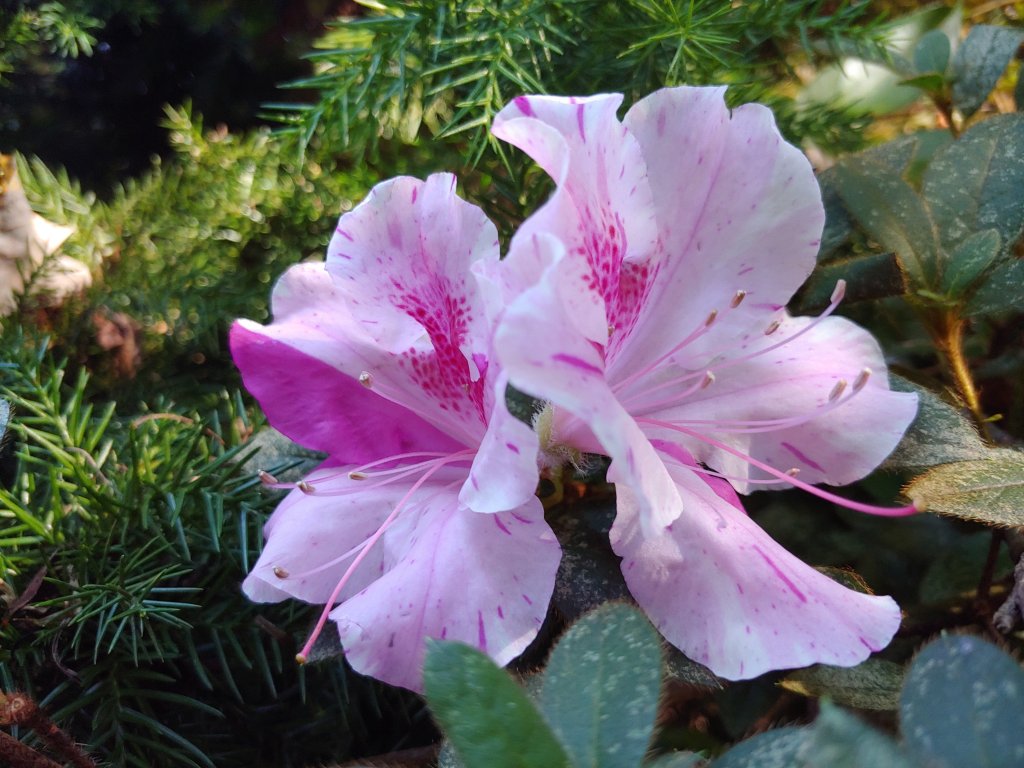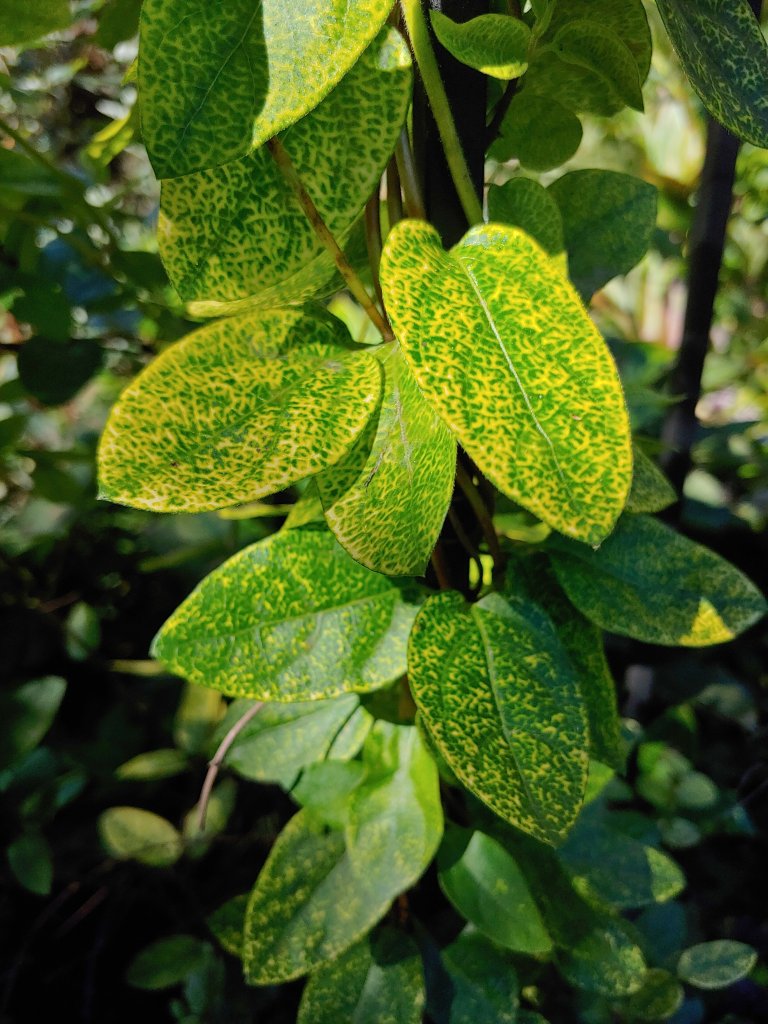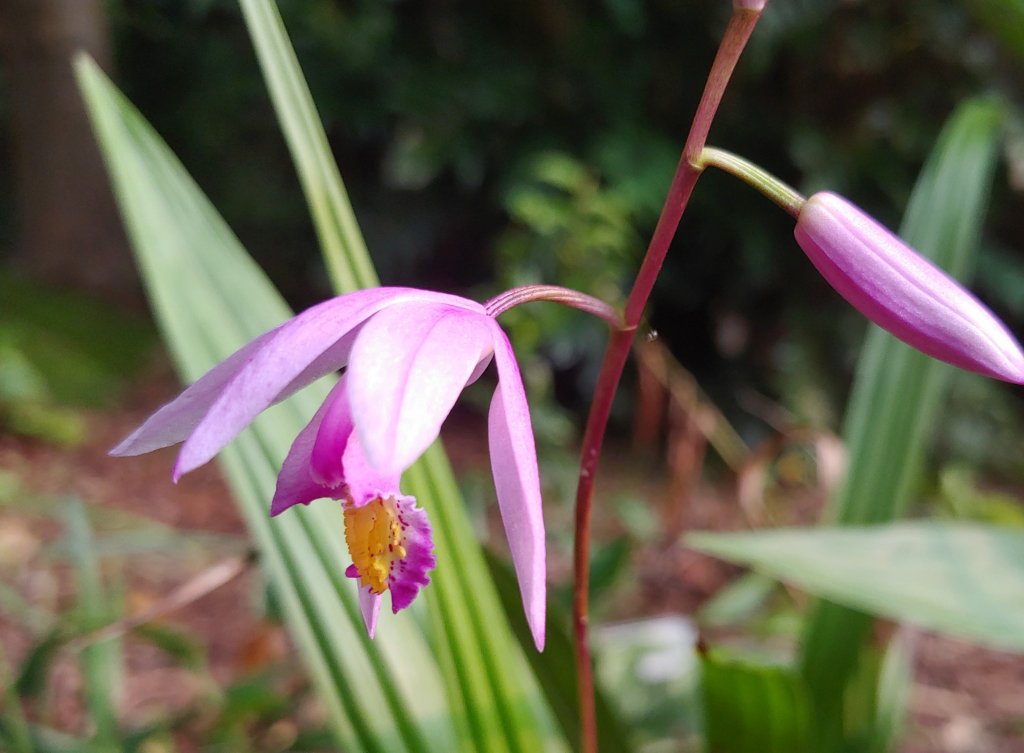Frost is on the way, possibly tonight, but soon. My wife says the weather turned cold a week ago when muggy daytime highs in the eighties and nineties slipped into the seventies, but this is only cool, and thankfully so. Now, the forecast, in this week before summer ends, is for three nights dropping into the thirties. Unusual, but not unheard of.

Certainly, I’m not anxious for the arrival of cold temperatures, though I’m never disappointed to say goodbye to summer heat. And, this stretch of chilly nights won’t last.

Despite warnings, the tropicals will remain outdoors, though new growth on a tender Brazilian Orchid tree (Bauhinia forficata, above) was damaged at forty-two degrees and it was lugged into the greenhouse until warmer days return. Most of the plants that will be hauled into the basement for the winter will tolerate frost and even a mild freeze, and with warmer temperatures returning in a few days these are likely to remain outdoors for another month. I’m not anxious to clutter the basement, where the tropicals are moved for survival, not for display.

With cold moving in this week, or in another month, the decline of flowers and foliage is inevitable. Toad lilies (Tricyrtis, above) are late reaching their peak, but many could flower into November if hard freezes are delayed.

A vigorous Silver Fleece vine (Fallopia baldschuanica ‘Lemon Lace’, above) planted in spring has slowed its growth. It is flowering, and despite cautions that the vine can become a rampant nuisance, a yellow leafed variety was selected with the promise that it will be several degrees slower in growth. With similar thinking, a yellow leafed honeysuckle (Lonicera japonica ‘Aureoreticulata’, below) was planted a year ago, and in fuller sun than it would prefer, in hopes that it could be tamed. So far, with success, and with cooler recent temperatures the honeysuckle has moved beyond a minor problem with mildew that got me thinking it might have to be moved to a shadier spot.



Which bletilla is reflowering? Is it reflowering from transplantation shock?
I’m certain this is a fluke due to the transplant.
Brazilian orchid tree is an odd choice for a climate in which it must be potted. They are such nice small trees, although rare here. The common orchid tree is more common down south. There are a few other species that are sometimes observed as well. However, one that I have not seen since it appeared briefly in about 1985 is Bauhinia punctata. It was none too impressive, but was a nice light duty blooming shrub, like a subdued version of the Western redbud. (The Western redbud is shrubbier than the Eastern sorts.) It was more tolerant to frost than the others. I sort of wondered what happened to it, and why it never became more popular.
The tree is in the ground, but planting late in the year marginally cold hardy plants must be protected for the first winter. A leaf filled wire basket will surround the small tree this first winter. I’ve done this before to gain at least ten degrees of cold protection.